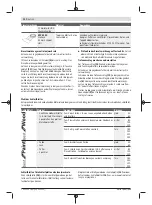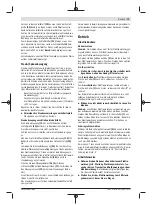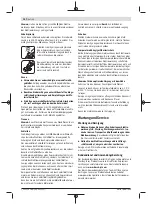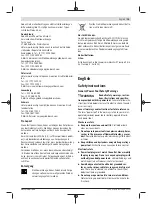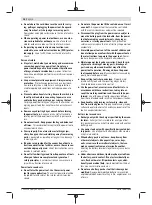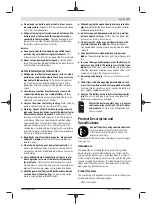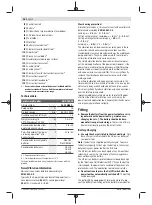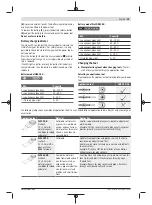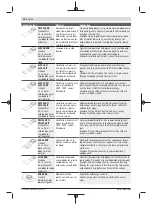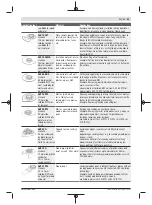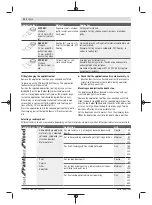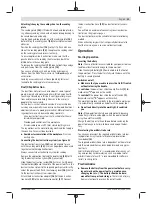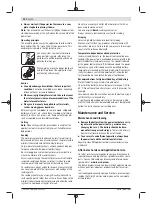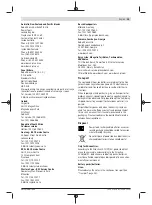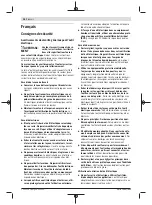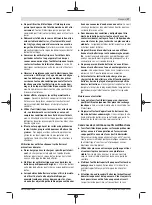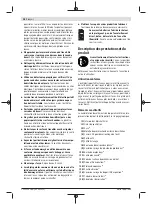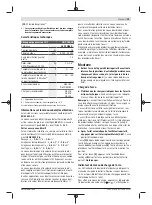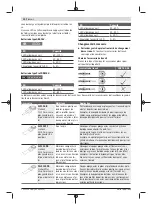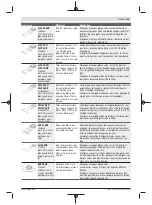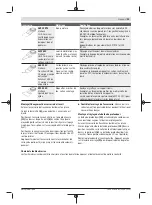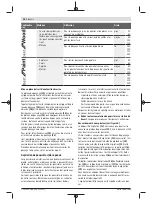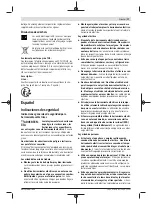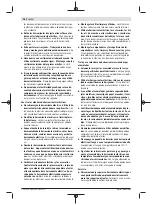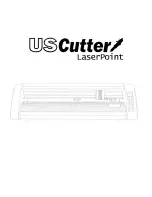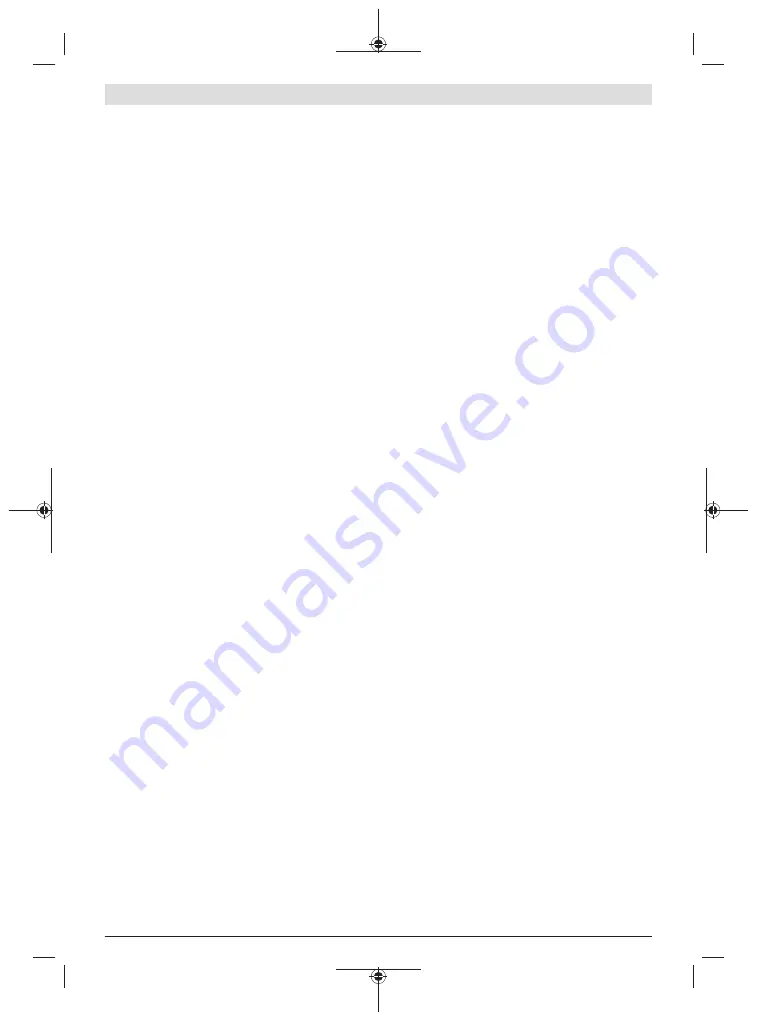
English |
23
Attaching/changing the sanding sheet on the sanding
plate
The sanding plate
(14)
is fitted with a hook-and-loop fasten-
ing, allowing sanding sheets with a hook-and-loop backing to
be secured quickly and easily.
Tap the hook-and-loop fastening of the sanding plate
(14)
before fitting the sanding sheet
(15)
to facilitate maximum
adhesion.
Position the sanding sheet
(15)
so that it is flush with one
side of the sanding plate
(14)
, then place the sanding sheet
on the sanding plate and press it on firmly.
To ensure optimum dust extraction, make sure that the
punched holes in the sanding sheet are aligned with the
drilled holes in the sanding plate.
To remove the sanding sheet
(15)
, take hold of it by an edge
and pull it away from the sanding plate
(14)
.
You can use all sanding sheets, polishing and cleaning
fleeces from the Delta 93 mm series in the
Bosch
range of
accessories.
Sanding accessories such as fleece/polishing felt are at-
tached to the sanding plate in the same way.
Dust/Chip Extraction
The dust from materials such as lead paint, some types of
wood, minerals and metal can be harmful to human health.
Touching or breathing in this dust can trigger allergic reac-
tions and/or cause respiratory illnesses in the user or in
people in the near vicinity.
Certain dusts, such as oak or beech dust, are classified as
carcinogenic, especially in conjunction with wood treatment
additives (chromate, wood preservative). Materials contain-
ing asbestos may only be machined by specialists.
– Use a dust extraction system that is suitable for the ma-
terial wherever possible.
– Provide good ventilation at the workplace.
– It is advisable to wear a P2 filter class breathing mask.
The regulations on the material being machined that apply in
the country of use must be observed.
u
Avoid dust accumulation at the workplace.
Dust can
easily ignite.
Connecting the dust extraction system (see figure A)
The dust extraction system
(13)
is only designed for use
with the sanding plate
(14)
; it serves no purpose when used
together with other application tools.
Always connect a dust extraction system for sanding.
Remove the application tool and the depth stop
(10)
for fit-
ting the dust extraction system
(13)
(accessory).
Slide the dust extraction system
(13)
as far as it will go over
the tool holder
(6)
onto the collar of the power tool. Turn the
dust extraction system to the required position (not directly
under the power tool). Push the clamping lever
(16)
shut to
fix the dust extraction system in position.
Attach the dust extraction adapter
(18)
of the dust extrac-
tion hose
(19)
to the dust extraction outlet
(17)
. Connect
the dust extraction hose
(19)
to a dust extractor (access-
ory).
You will find an overview of connecting to various dust ex-
tractors on the graphics pages.
The dust extractor must be suitable for the material being
worked.
When extracting dry dust that is especially detrimental to
health or carcinogenic, use a special dust extractor.
Operation
Starting Operation
Inserting the battery
Note:
The use of batteries unsuitable for your power tool can
lead to malfunctions or damage to the power tool.
Slide the charged battery
(3)
from behind into the foot of
the power tool. Press the battery fully into the base until the
battery is securely locked.
Switching on/off
u
Make sure that you are able to press the On/Off switch
without releasing the handle.
To
switch on
the power tool, slide the on/off switch
(1)
for-
ward so that
"I"
appears on the switch.
To
switch off
the power tool, slide the on/off switch
(1)
backwards so that
"0"
appears on the switch.
The worklight improves visibility in the immediate work area.
It is automatically switched on and off with the power tool.
u
Do not look directly into the worklight; it can blind
you.
Note:
If the power tool shuts down automatically because
the battery is flat or overheated, switch the power tool off
using the on/off switch
(1)
.
Charge the battery or let it cool down before switching the
power tool on again. Failure to do so can damage the bat-
tery.
Preselecting the orbital stroke rate
You can even preselect the required orbital stroke rate dur-
ing operation using the orbital stroke rate preselection
thumbwheel
(4)
.
The required orbital stroke rate is dependent on the material
and the work conditions and can be determined using prac-
tical tests.
Orbital stroke rate level “6” is recommended for sawing, cut-
ting and sanding harder materials, such as wood or metal;
orbital stroke rate level “4” is recommended for softer ma-
terials, such as plastic.
Practical Advice
u
Remove the battery from the power tool before carry-
ing out work on the power tool (e.g. maintenance,
changing tool, etc.). The battery should also be re-
moved for transport and storage.
There is risk of injury
from unintentionally pressing the on/off switch.
Bosch Power Tools
1 609 92A 5NM | (04.06.2020)




